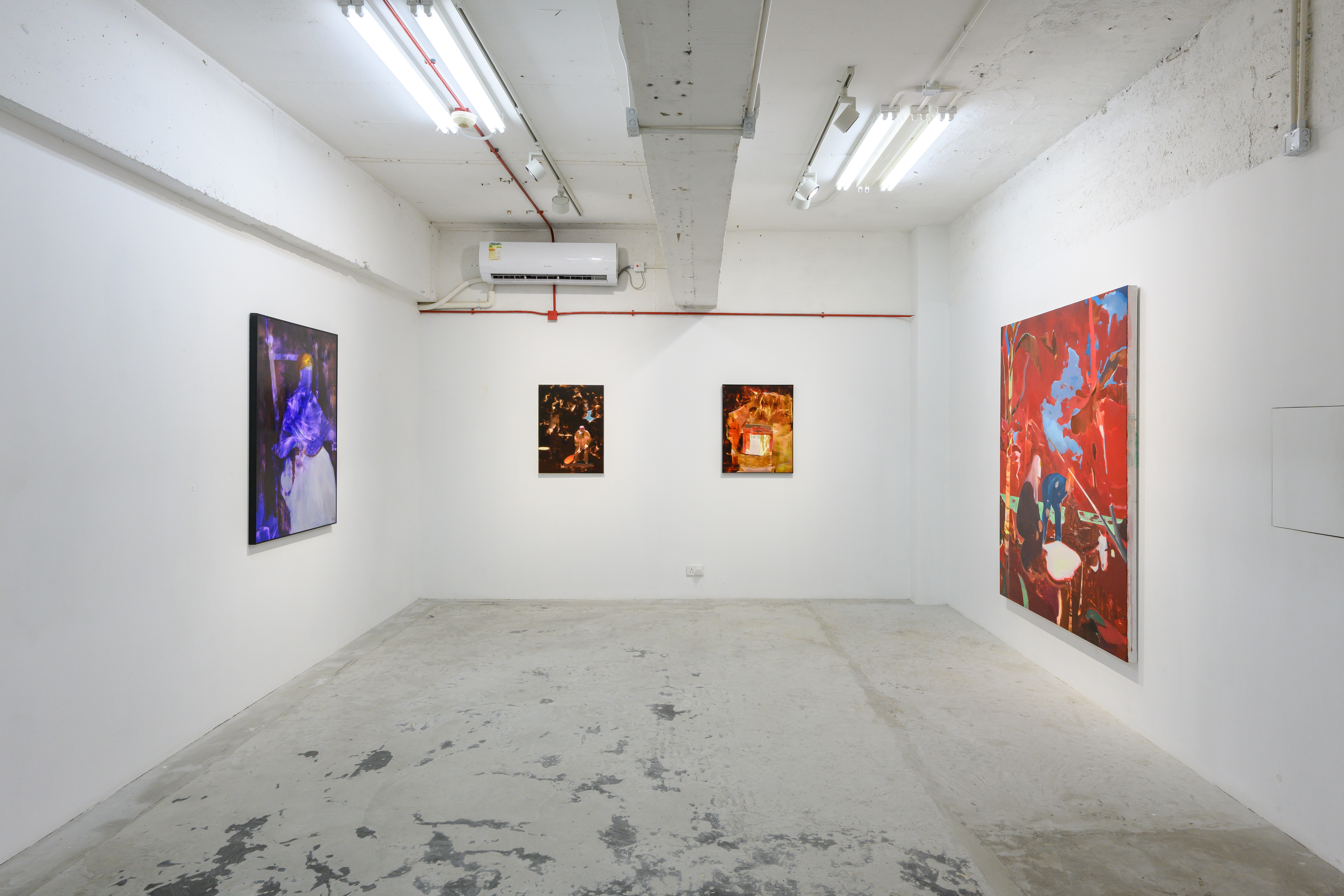Kiang Malingue is pleased to present on the twelfth floor of its Tin Wan studio space “Just Arrived in This World”, an exhibition of new paintings by Cui Xinming. The painter’s fourth solo exhibition with the gallery features more than a dozen oil paintings on wood board and canvas, expanding themes and series developed in the exhibition “Differentiation” in 2018. The artist’s sincere yet surreal depictions of everyday scenes with absurd elements respond to the profound impact on life by recent global and local crises.
Cui Xinming’s early painting practice revolved around theatrical narratives by highlighting the contrast between thematic, fiery elements in crimson or faded red and glooming backgrounds that were frigid and sombre. Long-term series such as Black Hole of Memories from 2011 and Sleepwalker from 2013 are exemplary of the artist’s intent to reflect psychological tension by building highly detailed architectural environments in which an isolated community is caught. For the exhibition “Differentiation” in 2018, Cui created a group of paintings organised in pairs, examining dichotomised relationships such as ancient—modern; exposed—concealed; lucid—chaotic, measuring the possibility of reconciling Chinese classical thought with western artistic traditions.
The paintings included in “Just Arrived in This World” crystallise the continued development of Cui Xinming’s artistic language, and are representative of the accumulated yet ruptured life experience due to the outbreak of the global pandemic in 2019. Among the earliest works in the exhibition is the small-scale Genre Painting Study (Treasure Seeking) (2019) which captures and transforms a mundane and absurd sight — a hawker vending an alligator snapping turtle dug up from a construction site. For Cui, this fragment of reality that is at once common and complex brings together a variety of topics including commerce, land and environmental change, exotic animals, and different traditions of mysticism. This full-length portrait of the man, evocative of poised cavaliers in Dutch golden age portraits, demonstrates the use of “scratching and white-piercing” techniques in a painting process described by the artist to be akin to a type of “total casting” — fully integrating disparate compositional parts as if in one unifying stroke.
Using a variety of instruments, Cui Xinming’s “scratching and white-piercing” techniques produce an amorphous white glow that radiates by scarring and bleeding into other objects and figures on canvas. Inspired by traditional Chinese painting’s notion of white-spacing, this unique process reveals delicate textures and introduces into the paintings a sense of mysticism. The artist has also been exploring the materiality and texture of wood board as a painting surface, carefully priming each wood board about twenty times before starting the painting process, rendering it texturally suitable for his “scratching” brushwork. Genre Painting Study 13 (Smelting) (2021) is another painting on board that depicts an isolated individual at work, this time caught in a relationship with the environment that is more intense and aggressive: the masked man with a red, hot soldering iron in his hands scorches his environment. Based on an image of a gardener tending flowers and trees in a park, the painting deems great, uncontrollable global crises as the turning point from which a daily caring practice is transformed into a devastating act. Another pithy painting on wood board Portrait Study 11 (Pope) (2020) revisits the artistic tradition from Velázquez to Bacon, but totally erases the face of the sitter. It is instead focused on the strange, highlighted hair in place of the camauro worn by the pope. Cui thinks of hats and headwear alike as the index of an individual’s social status and roles; by replacing a hat with wig-like hair, Cui renders the majestic scene absurd, inserting an element of banality that breaks the originally mystical atmosphere.
Larger works on canvas such as Genre Painting Study (Spring Outing 2) (2022) and the diptych Genre Painting Study (Junzi 1) (2023) both pertain to outings in perilous times. The human figures are seemingly relaxed, and, out of confusion and boredom, apathetically or intensely fixated on an abrupt white hollow on the ground. A signifier of absence, this flat, amorphous, paradoxical cavity Cui has repeatedly painted since 2015 stands for misplacement, hollowness, error and otherworldliness, leaking enigmatic, illuminated ooze onto the canvas. Reminiscent of and readily opposed to the Is it getting dark? series of paintings of interior spaces from 2010, It is almost dawn I (2021) and It is almost dawn II (2021) created long before the ending of the pandemic candidly express the artist’s angst regarding the future, leaving the white hole beyond the highly textured, protective yet suffocating curtains: permeating could be the sunlight; not arriving yet could be the dawn.
(About Cui Xinming)
Cui Xinming (b. 1986, Shandong province) currently lives and works in Chongqing. Known for rendering everyday scenes surreal, Cui in distinct series of highly textured paintings expresses the tumultuous thoughts and reflections of a Chinese generation that is living through a period of constant change. Recent solo exhibitions include: “Differentiation”, Edouard Malingue Gallery, Hong Kong (2018); “Festival”, Edouard Malingue Gallery, Shanghai (2016), and “Journey to the East”, Edouard Malingue Gallery, Hong Kong (2014). Recent group exhibitions include: “The Jolt of Image: New Paintings by Chinese Millennials”, Chengdu Art Museum, Chengdu (2022); “Sans Soleil”, Edouard Malingue Gallery, Shanghai (2019); “Tenth Anniversary Retrospective Exhibition of Luo Zhongli Scholarship”, Chongqing Art Museum, Chongqing (2015). Cui received the prestigious Luo Zhongli Scholarship in 2011.
Just Arrived in This World Cui Xinming
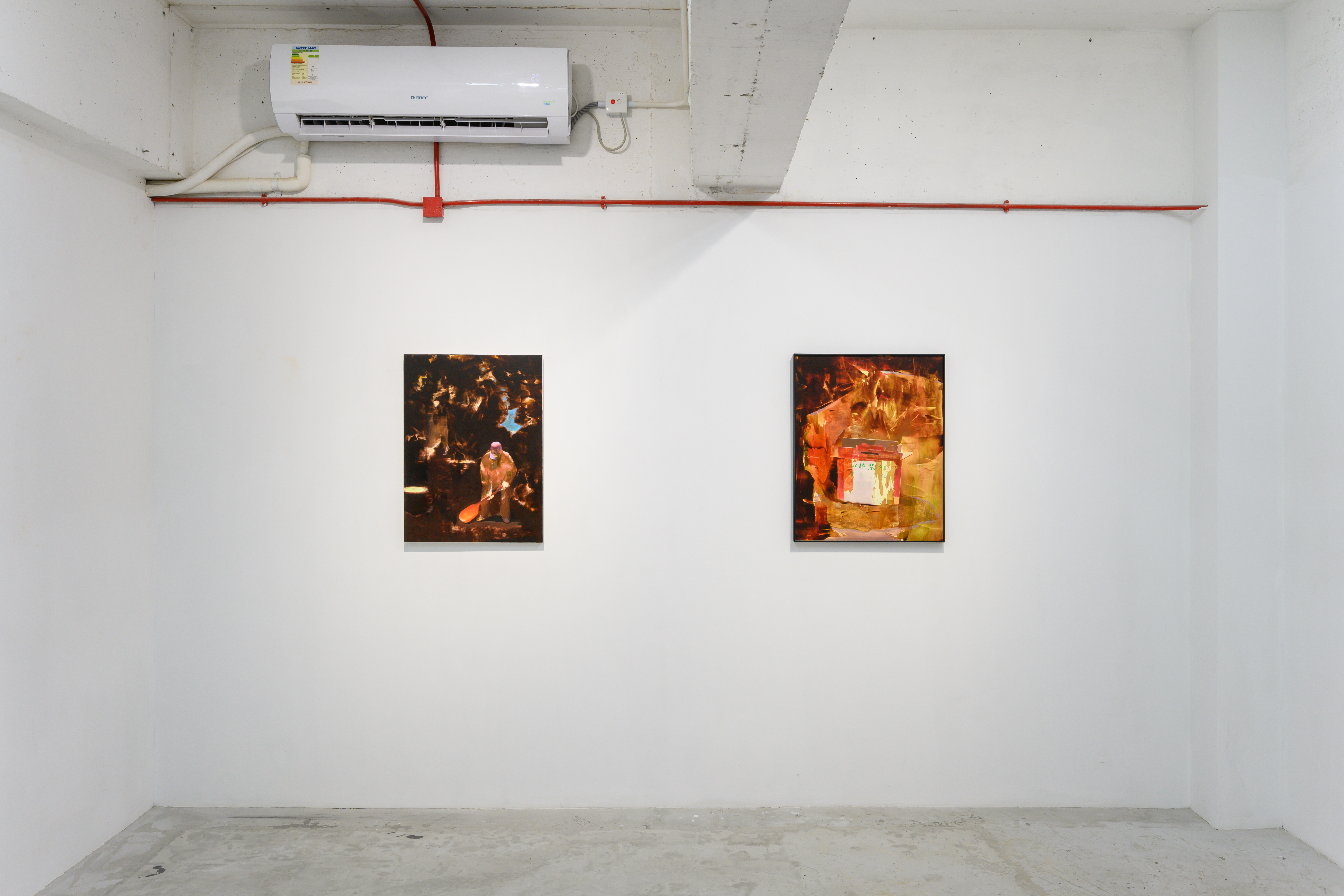
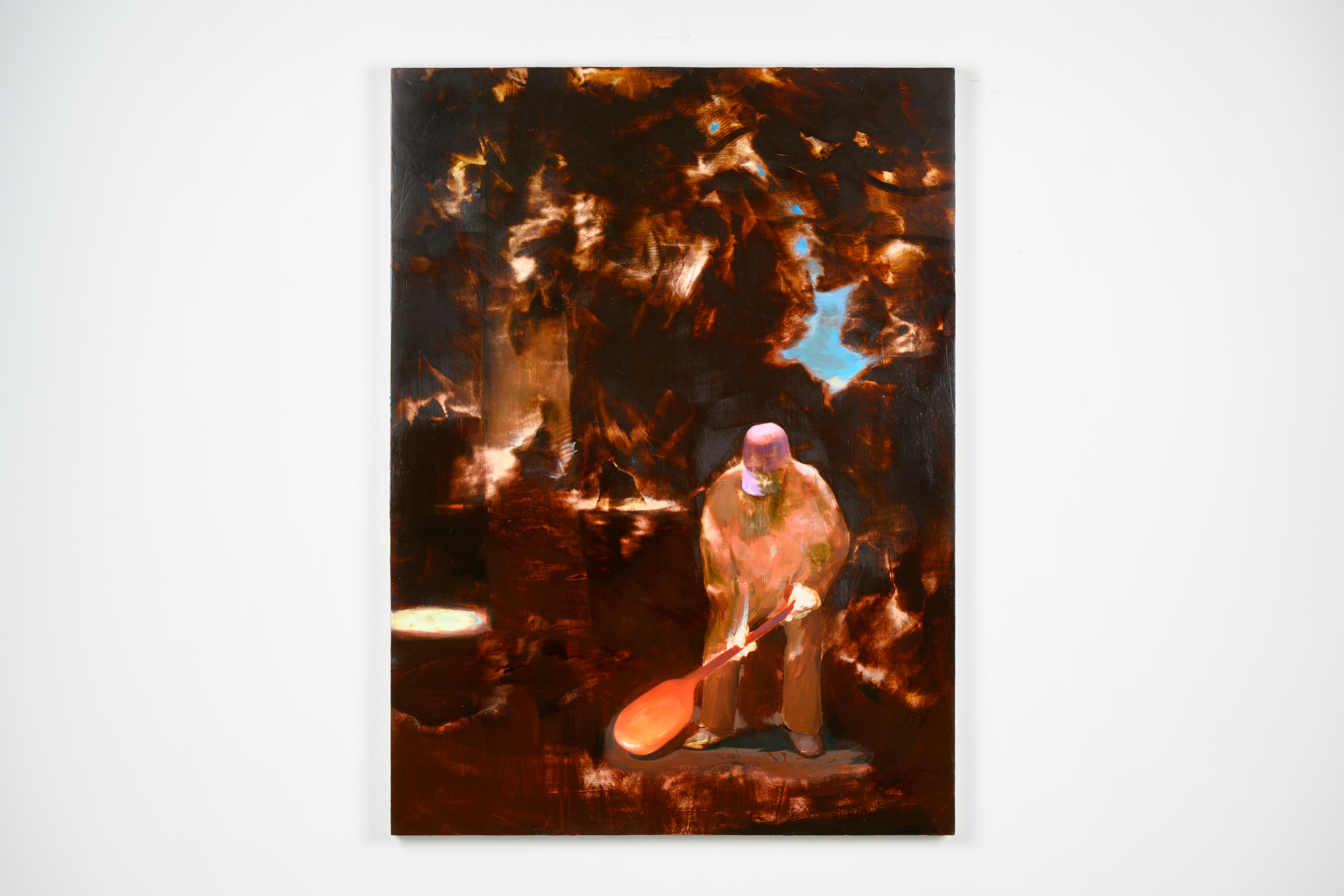
Oil on board
75 x 55 cm
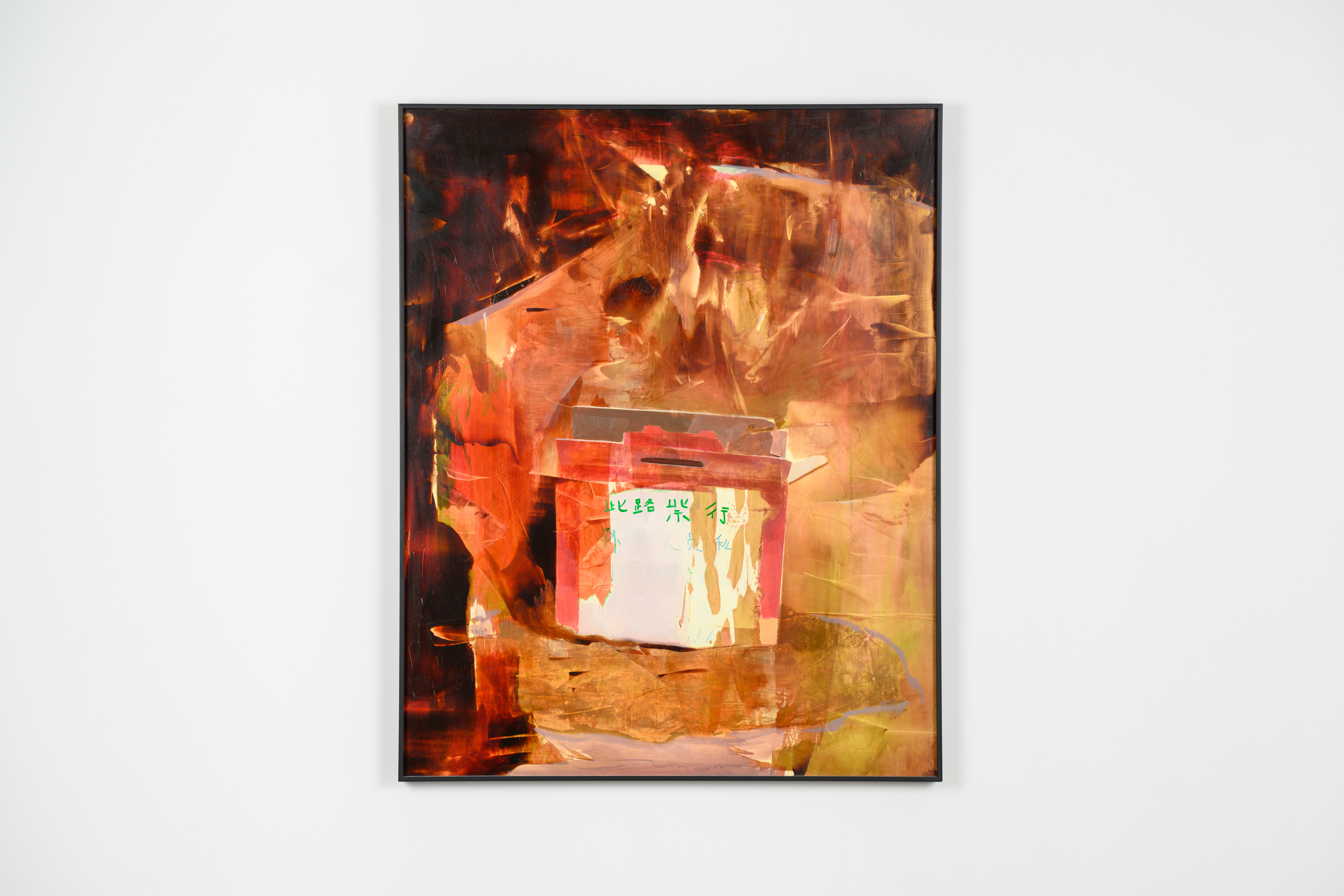
Acrylic and oil on PVC panel
74.5 x 59.5 cm
Framed: 75.4 x 60.5cm
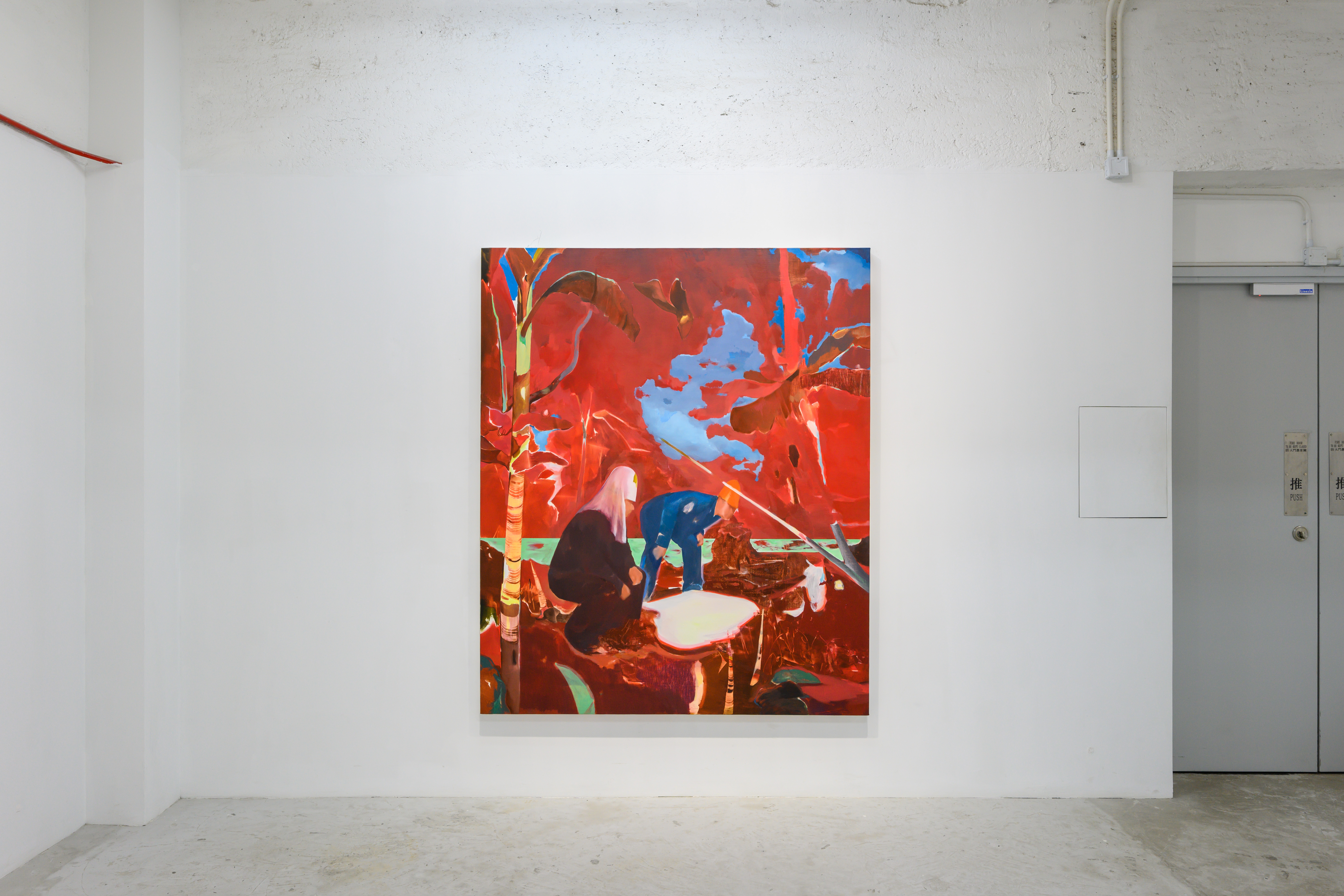
Oil on canvas
180 x 150 cm
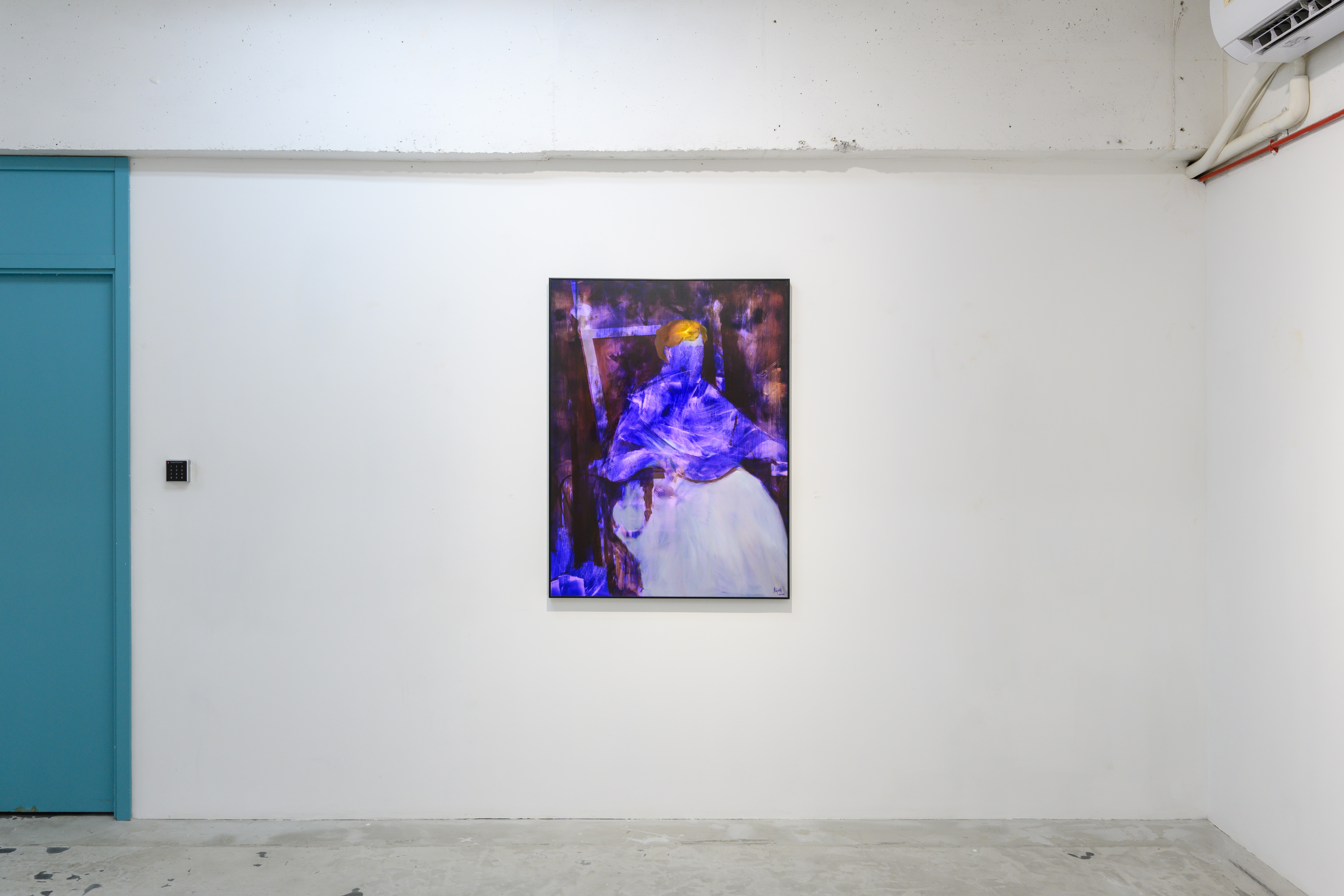
Oil on PVC panel
120 x 90cm
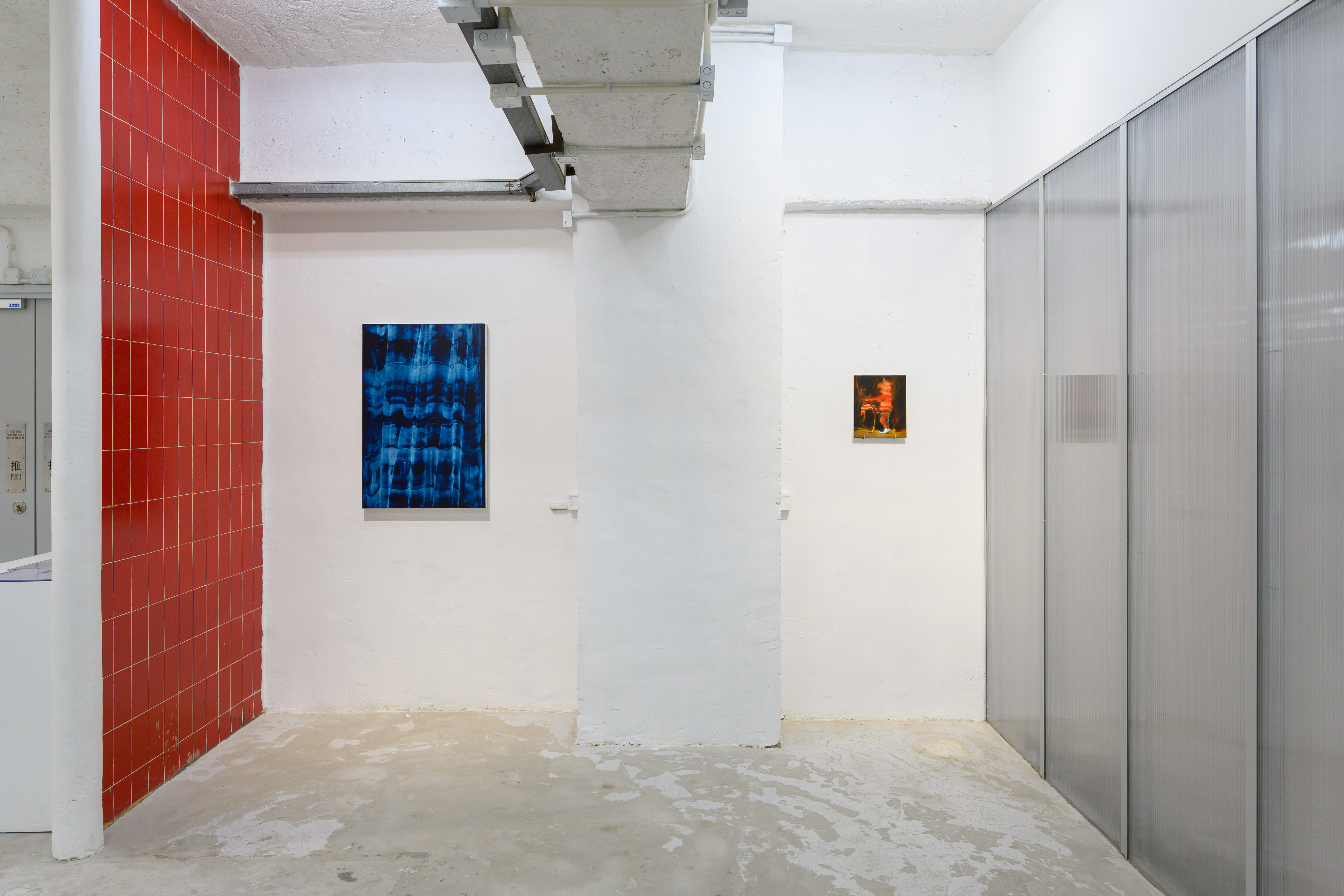
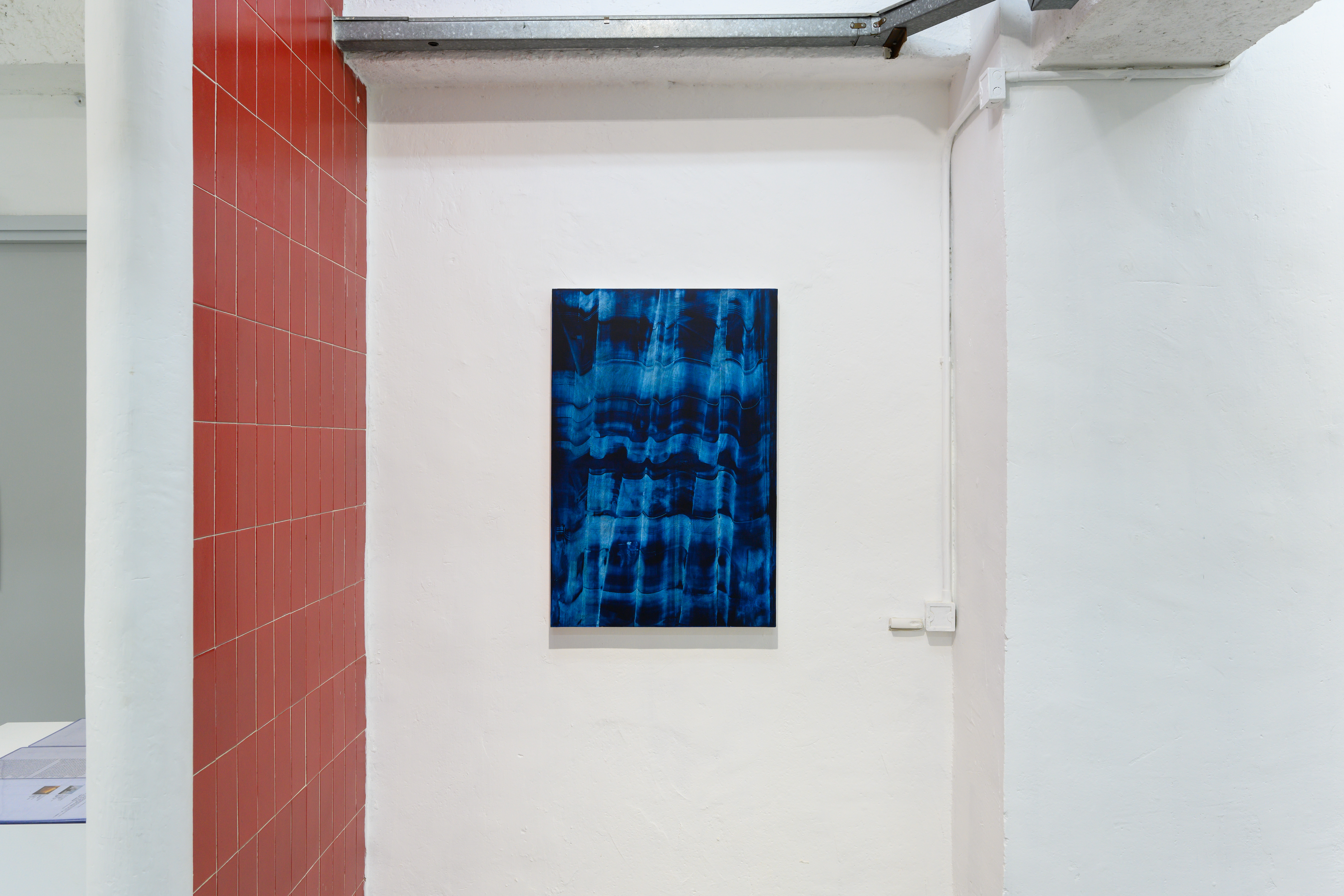
Oil on board
90 x 60 cm
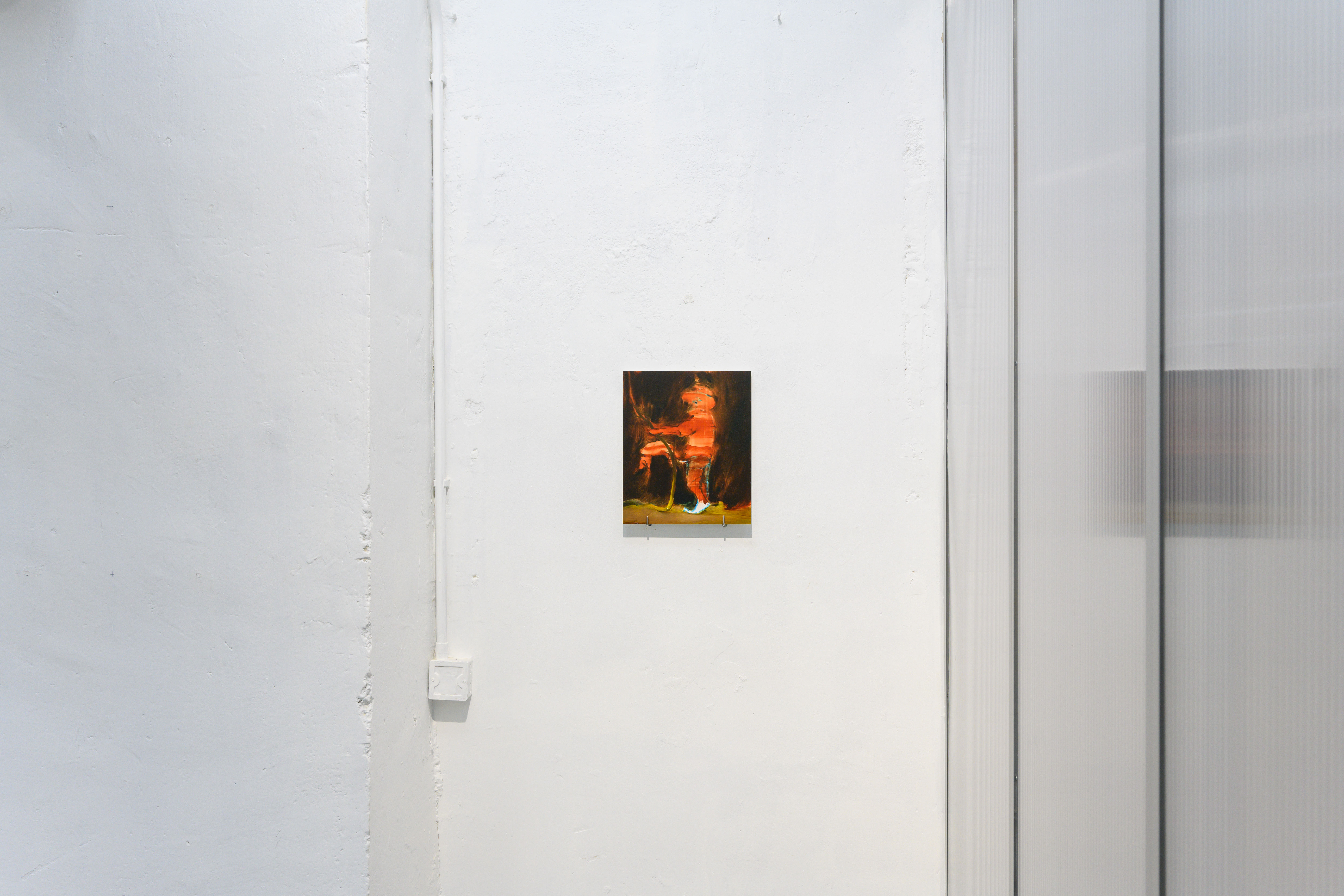
Oil on PVC panel
29.8 x 24.9 cm
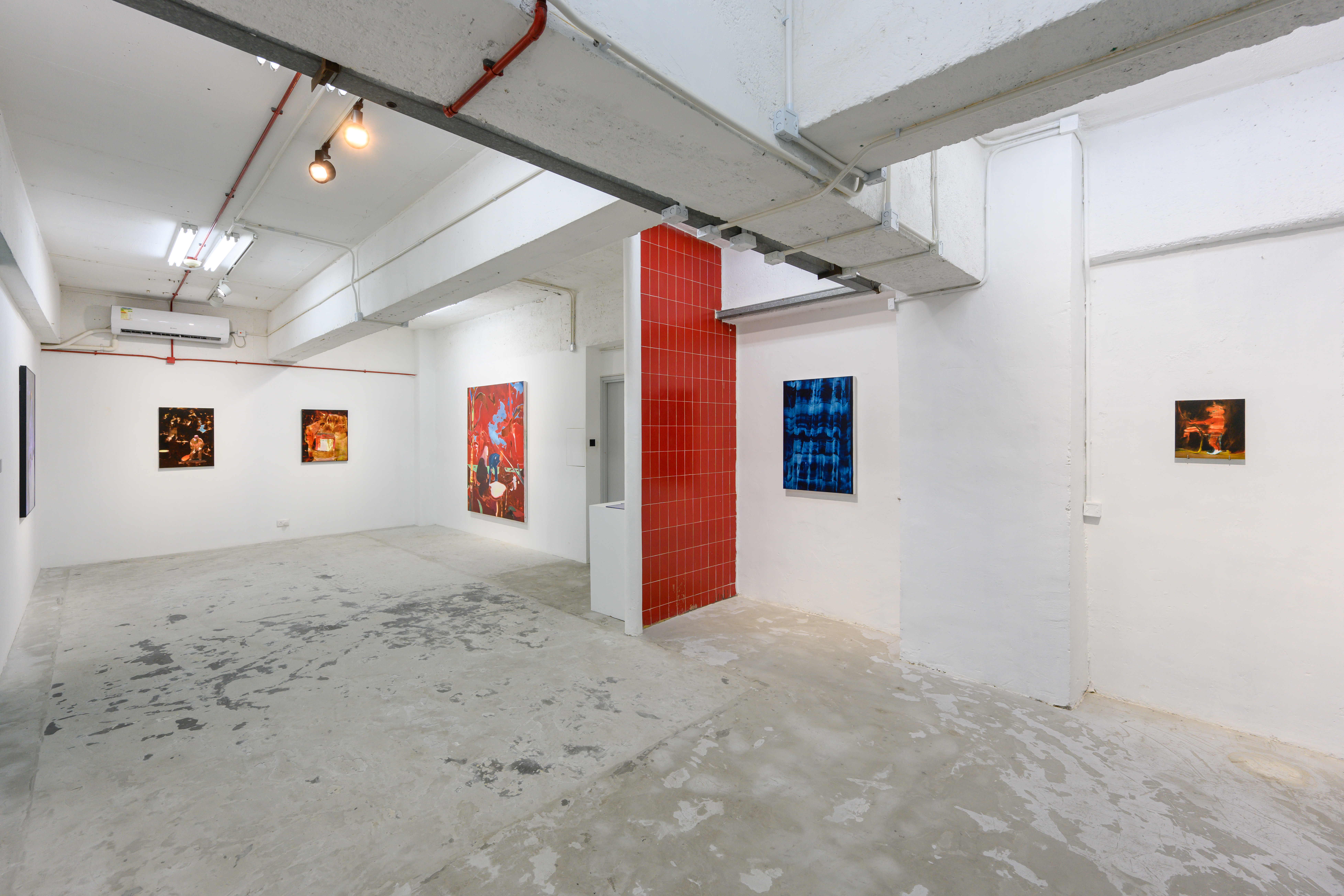
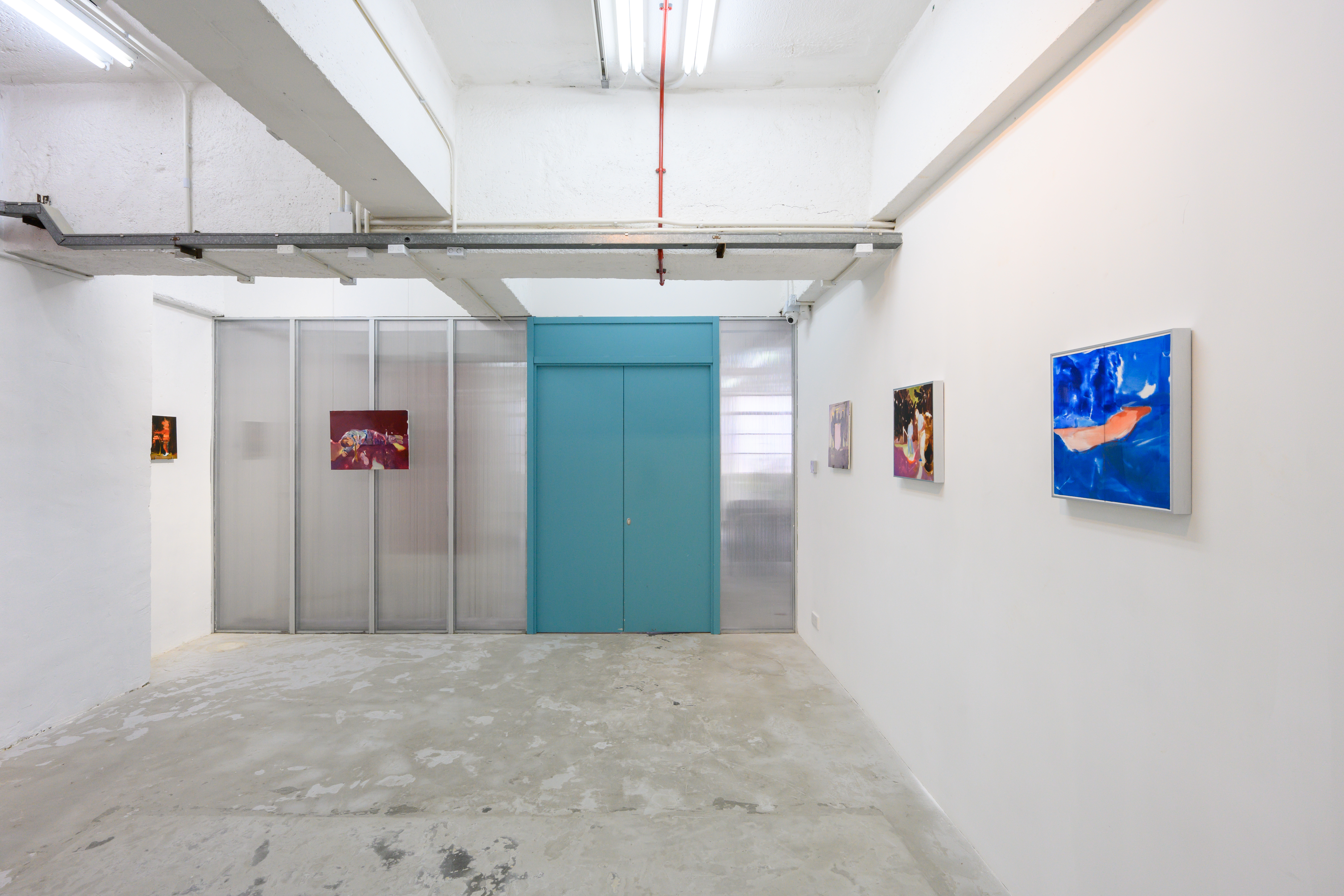
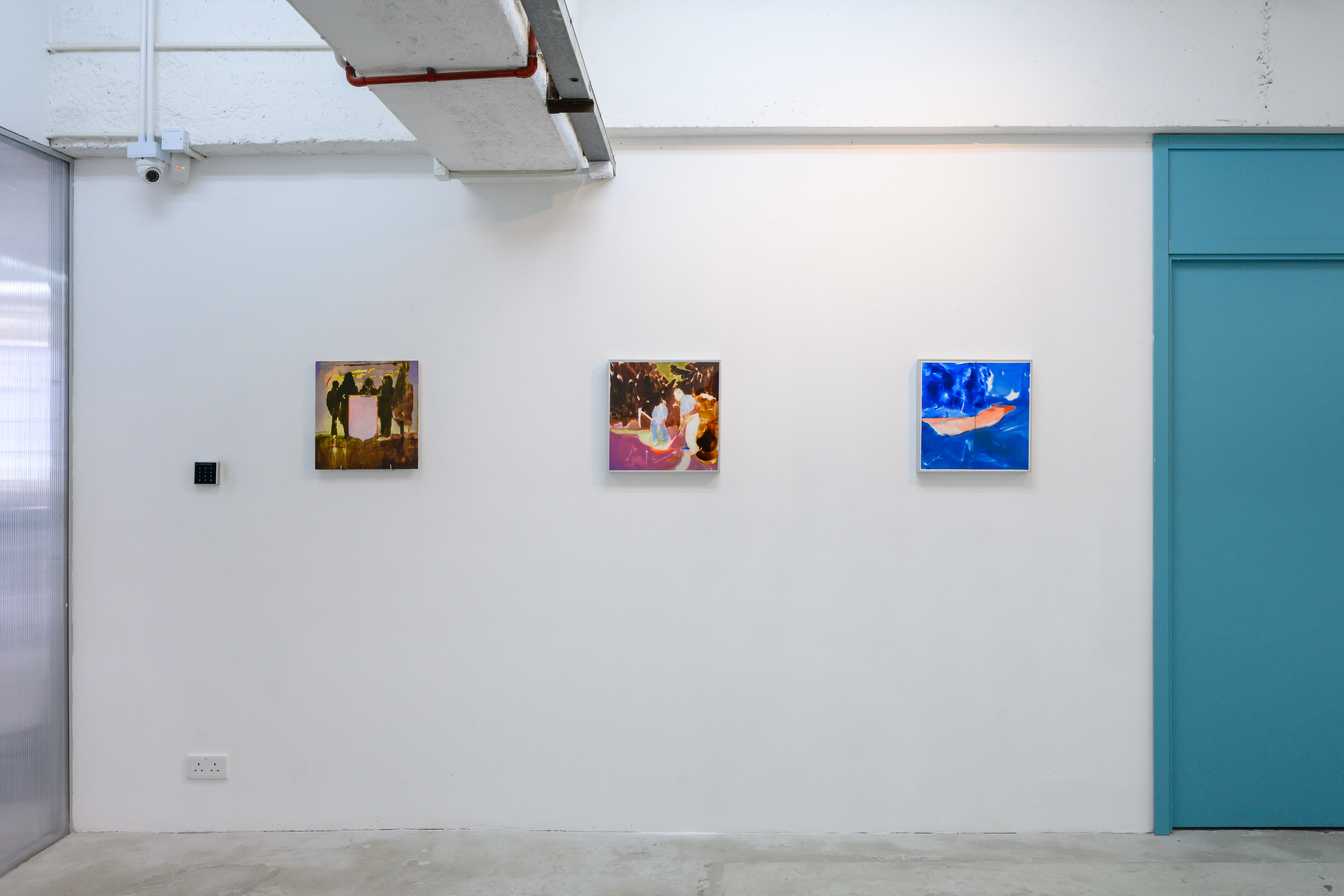
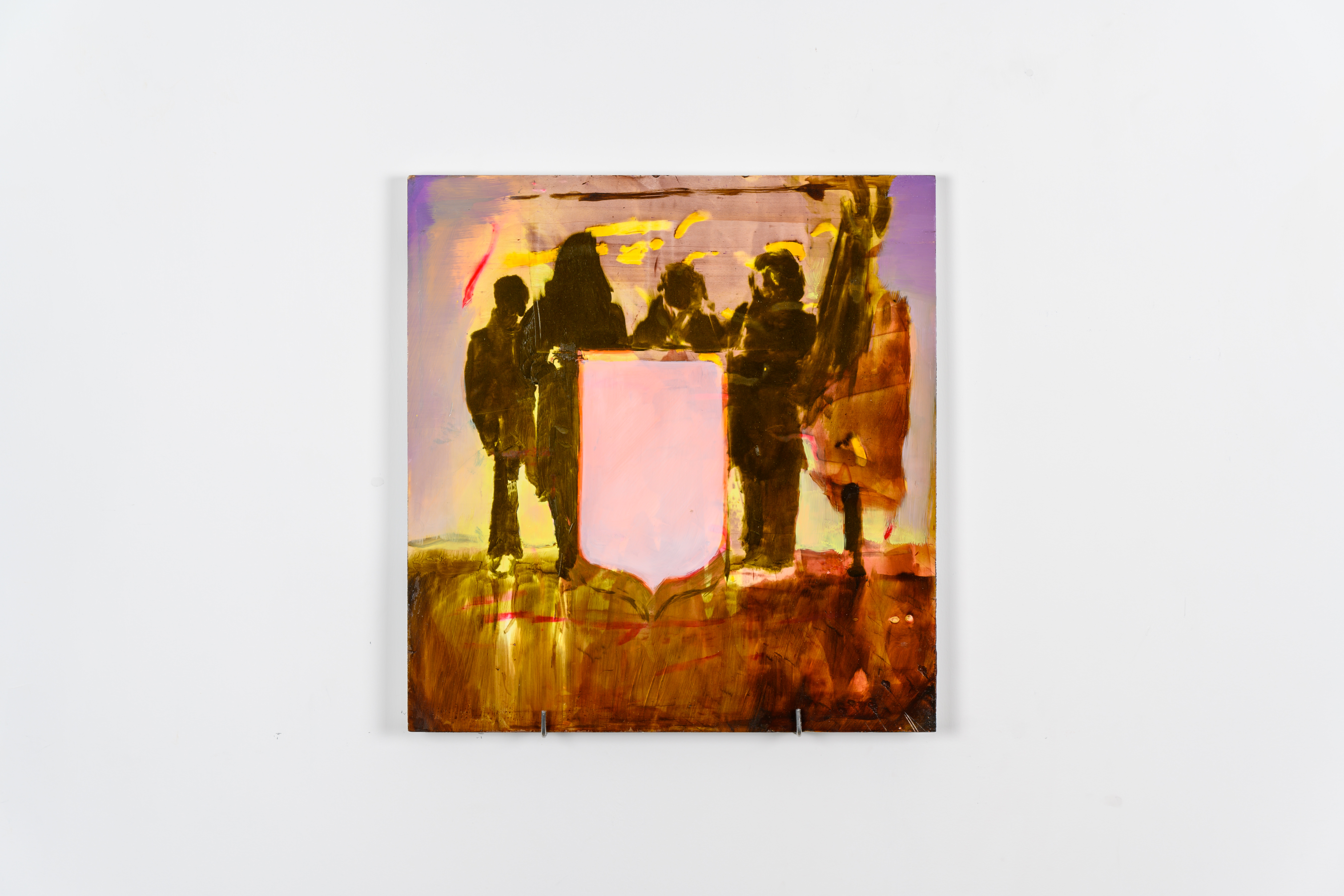
Oil on PVC panel
39 x 37 cm
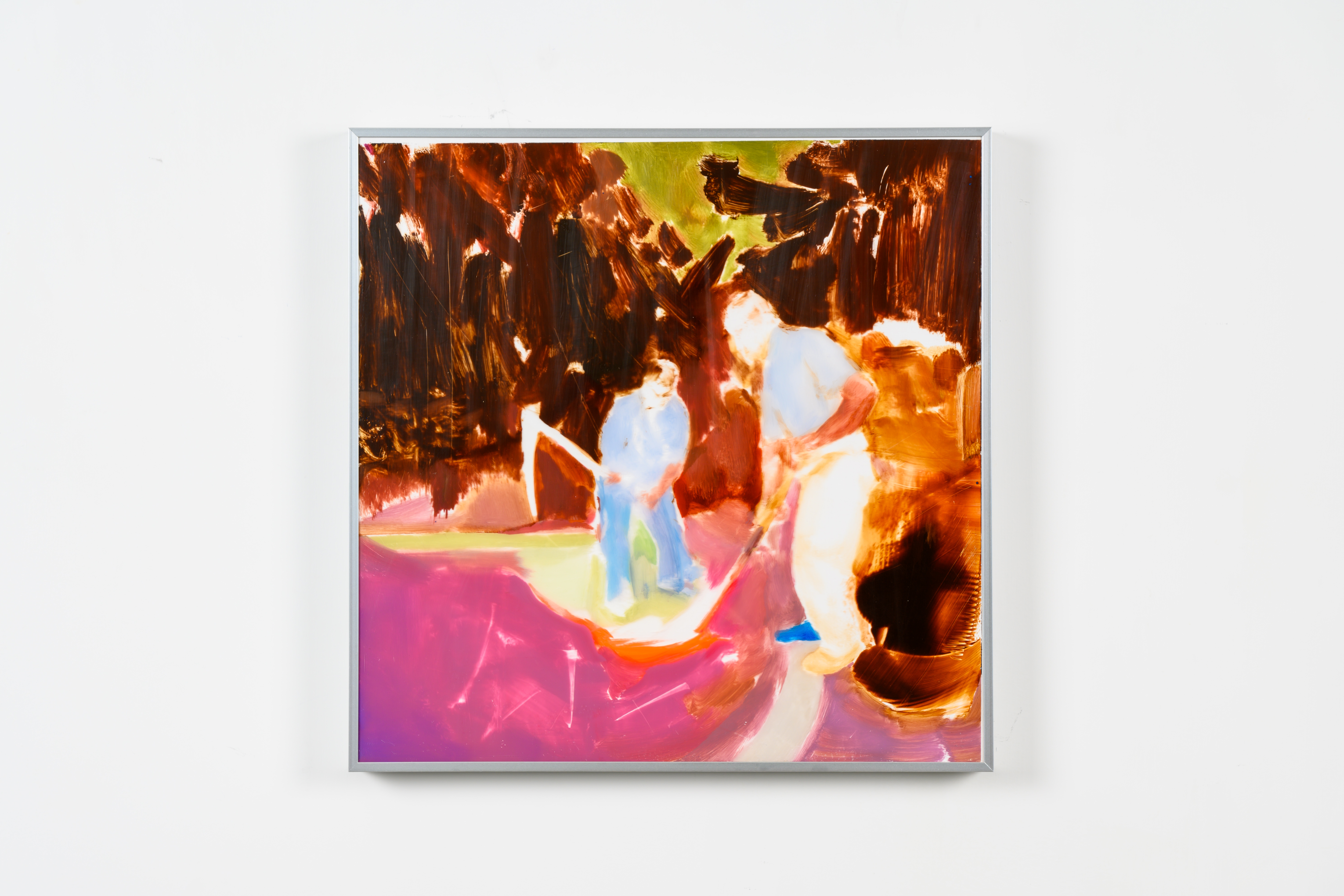
Oil on acrylic panel
40 x 40 cm
Framed: 40.3 x 40.3 cm
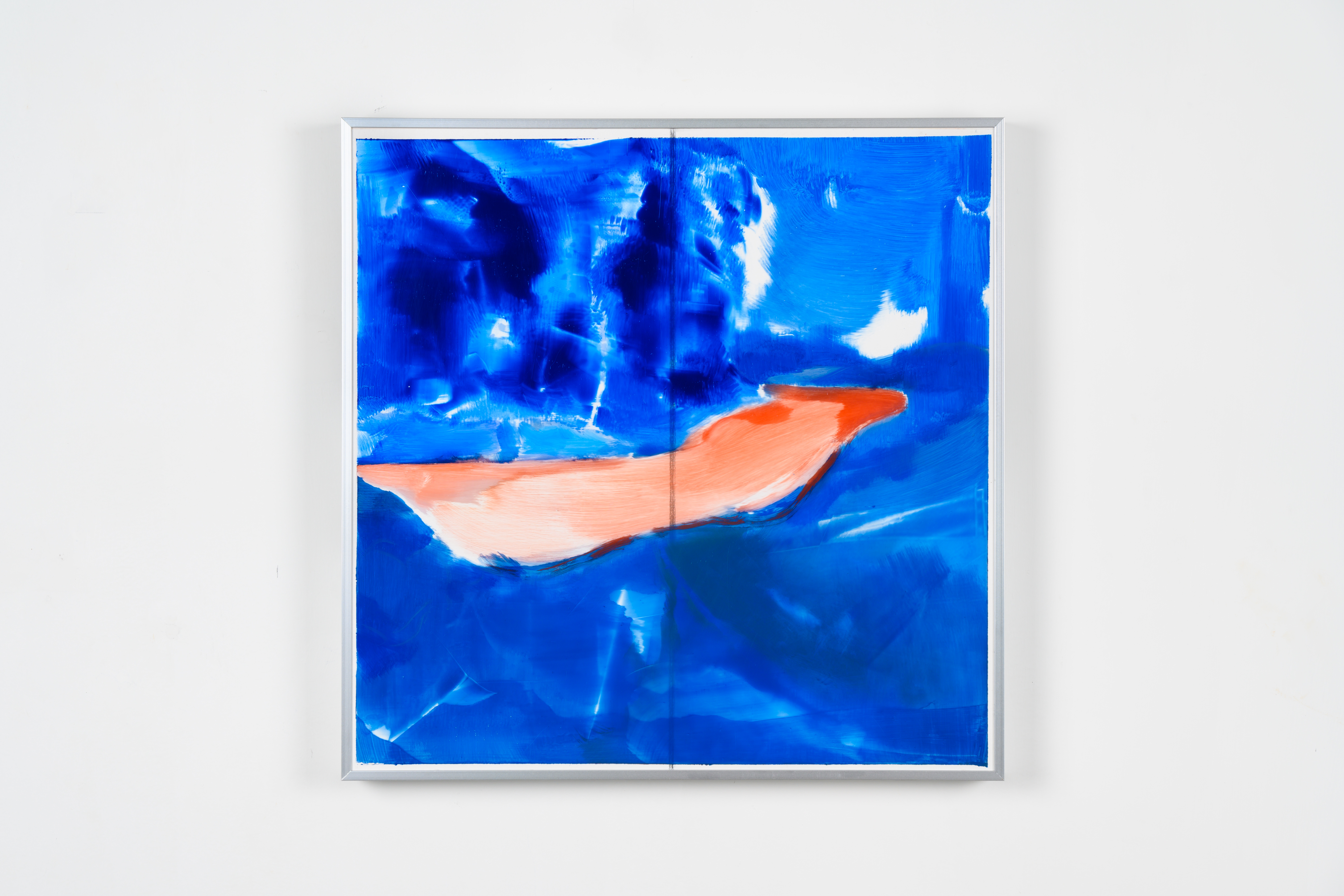
Oil on acrylic panel
40 x 40 cm
Framed: 40.3cm x 40.3cm
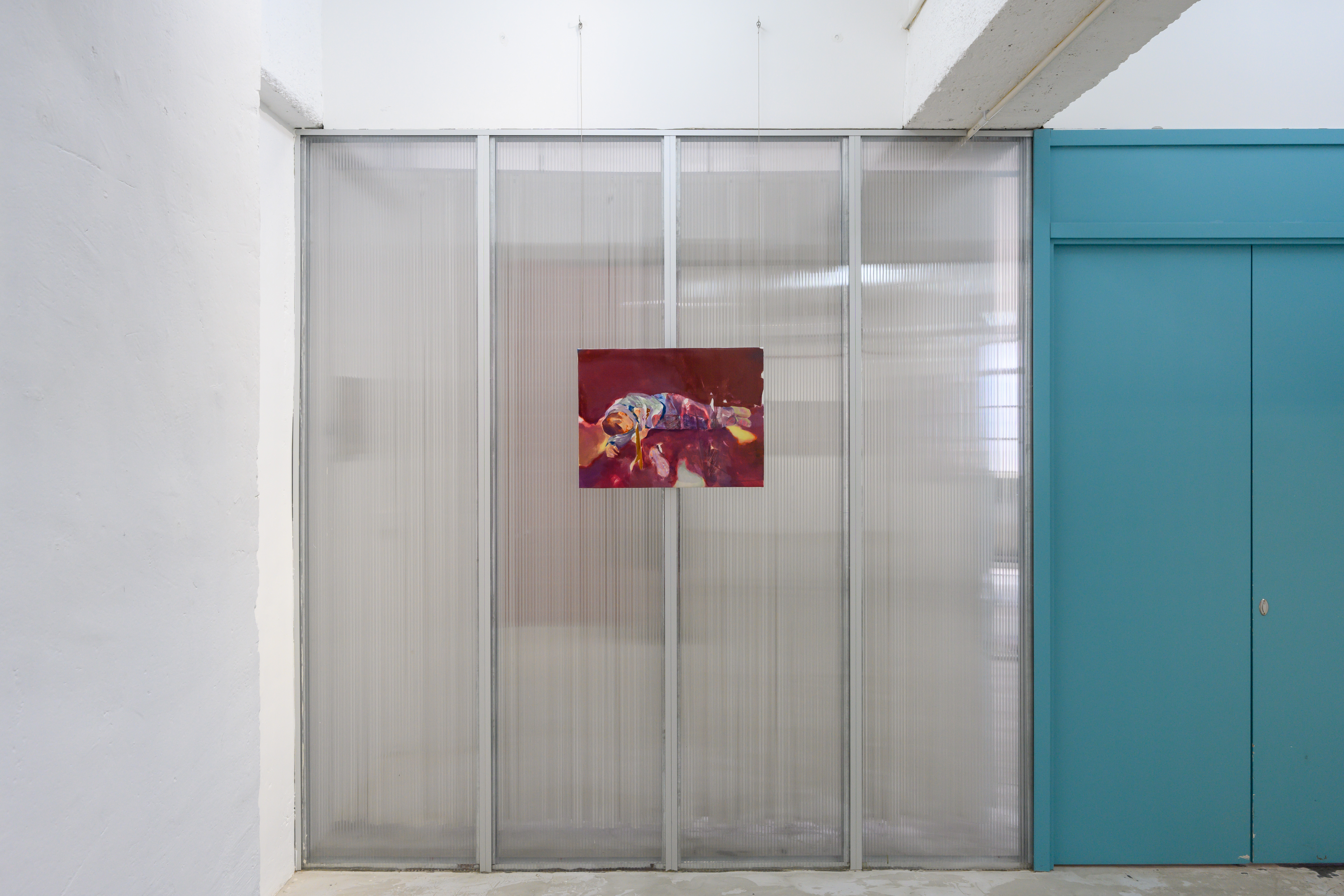
Oil on canvas
45 x 60 cm
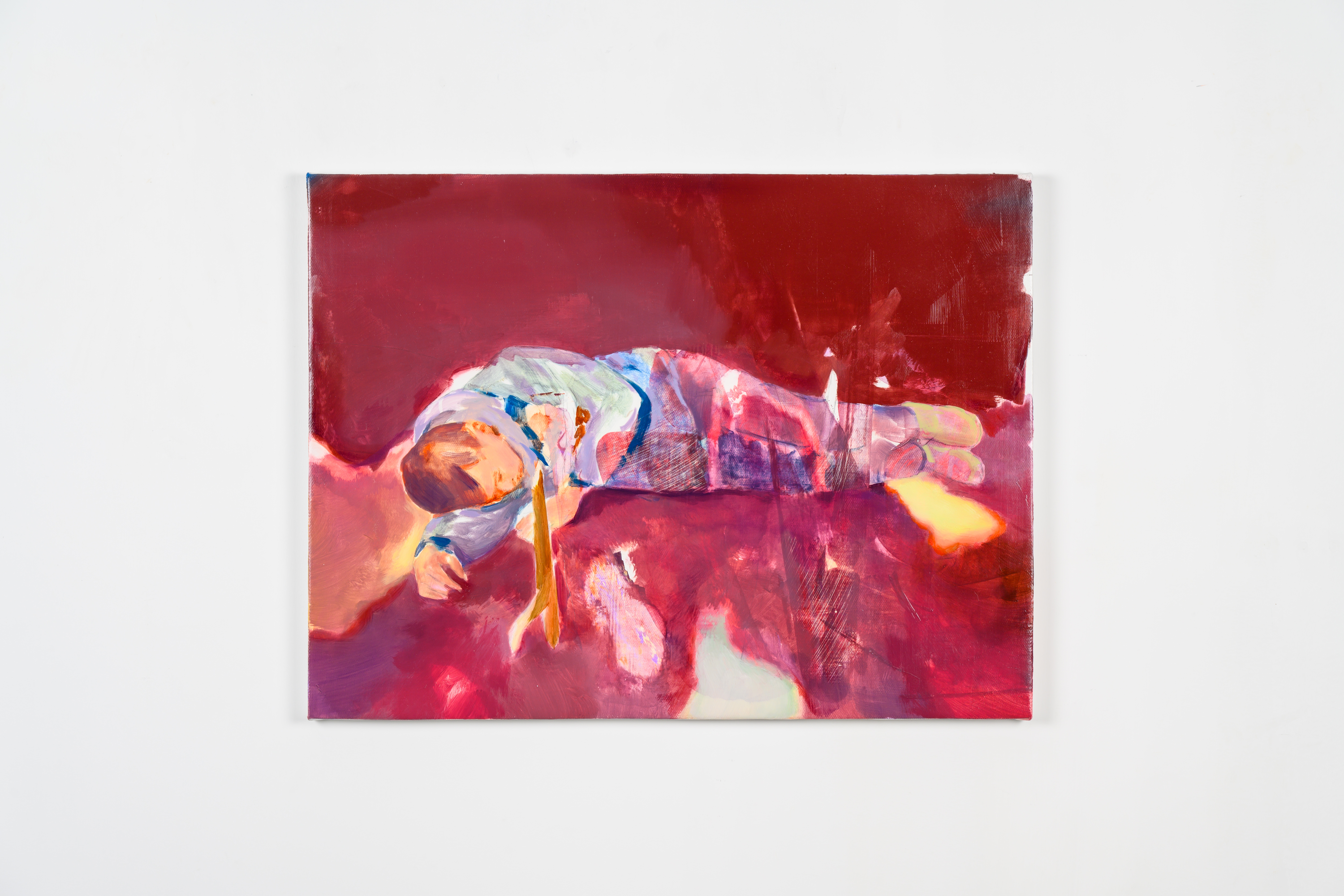
Oil on canvas
45 x 60 cm
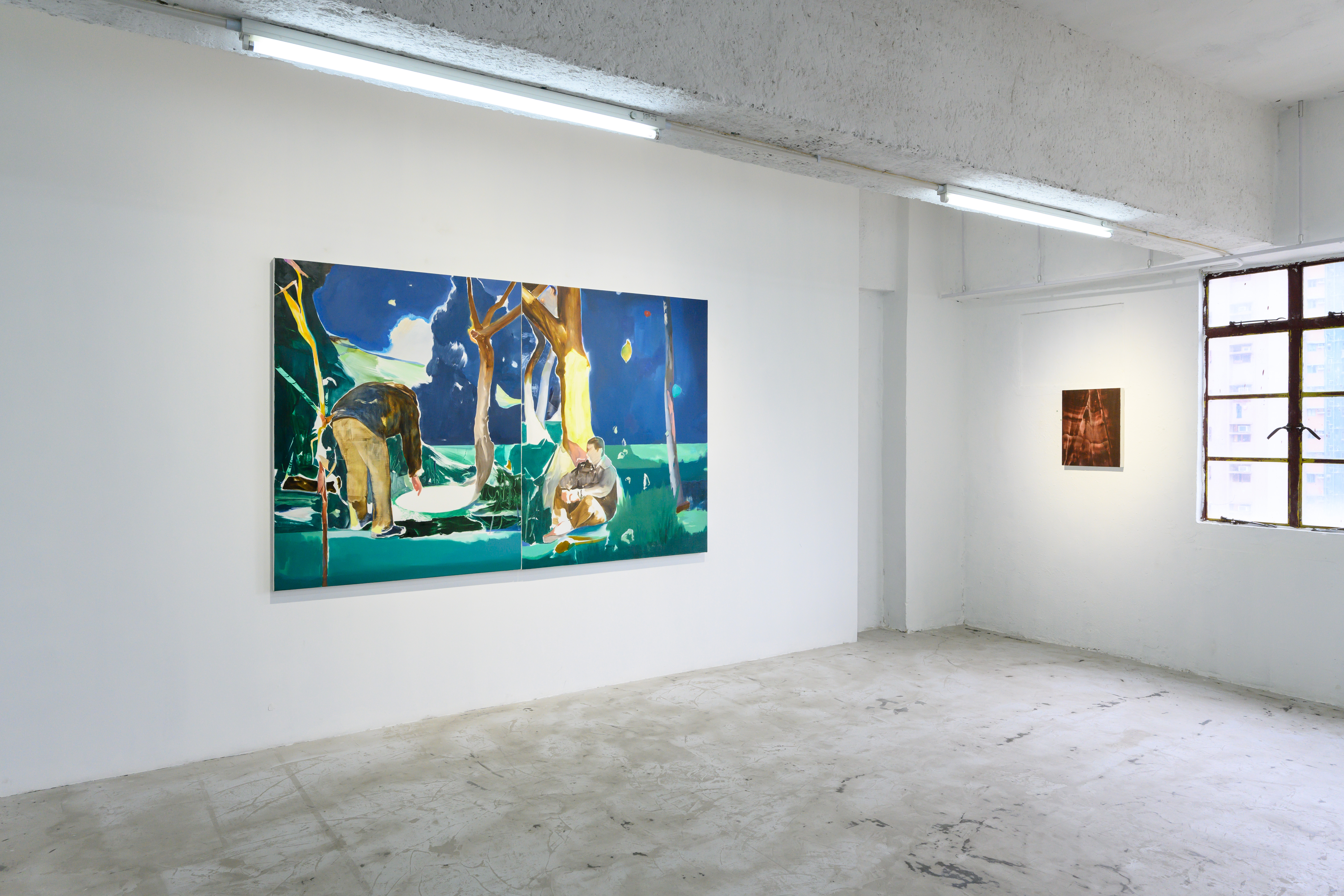
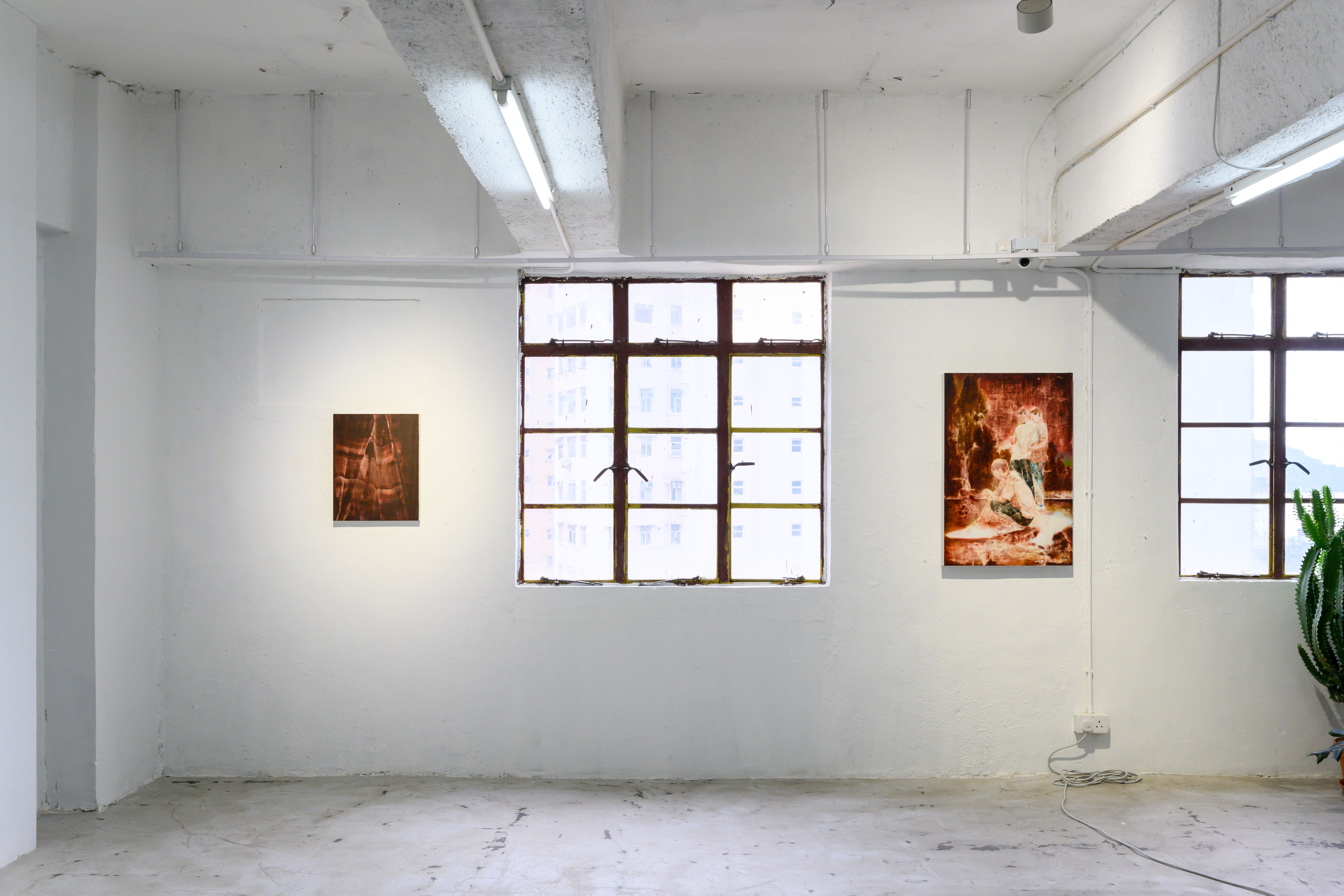
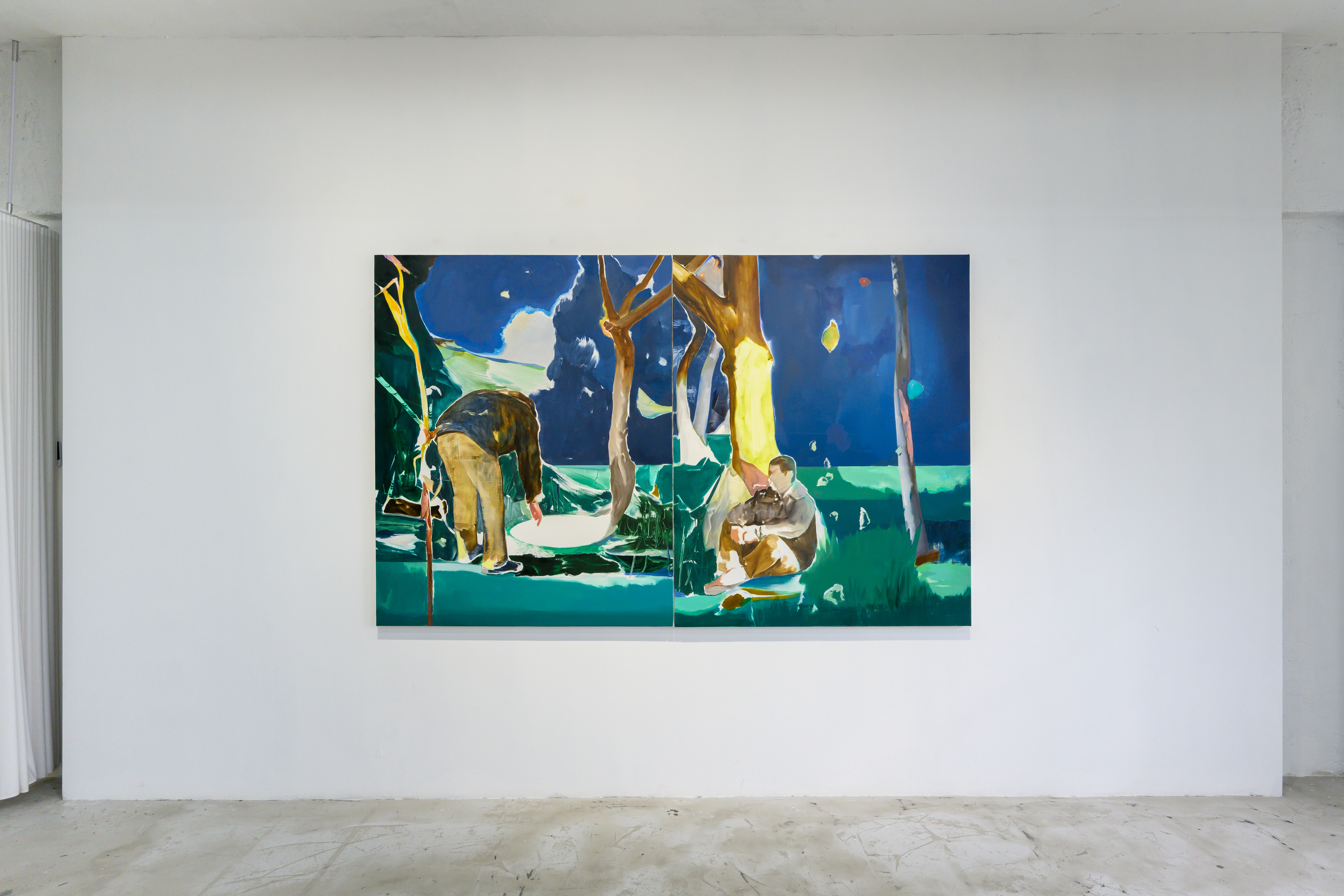
Oil on canvas
150 x 240 cm (150 x 120 cm each)
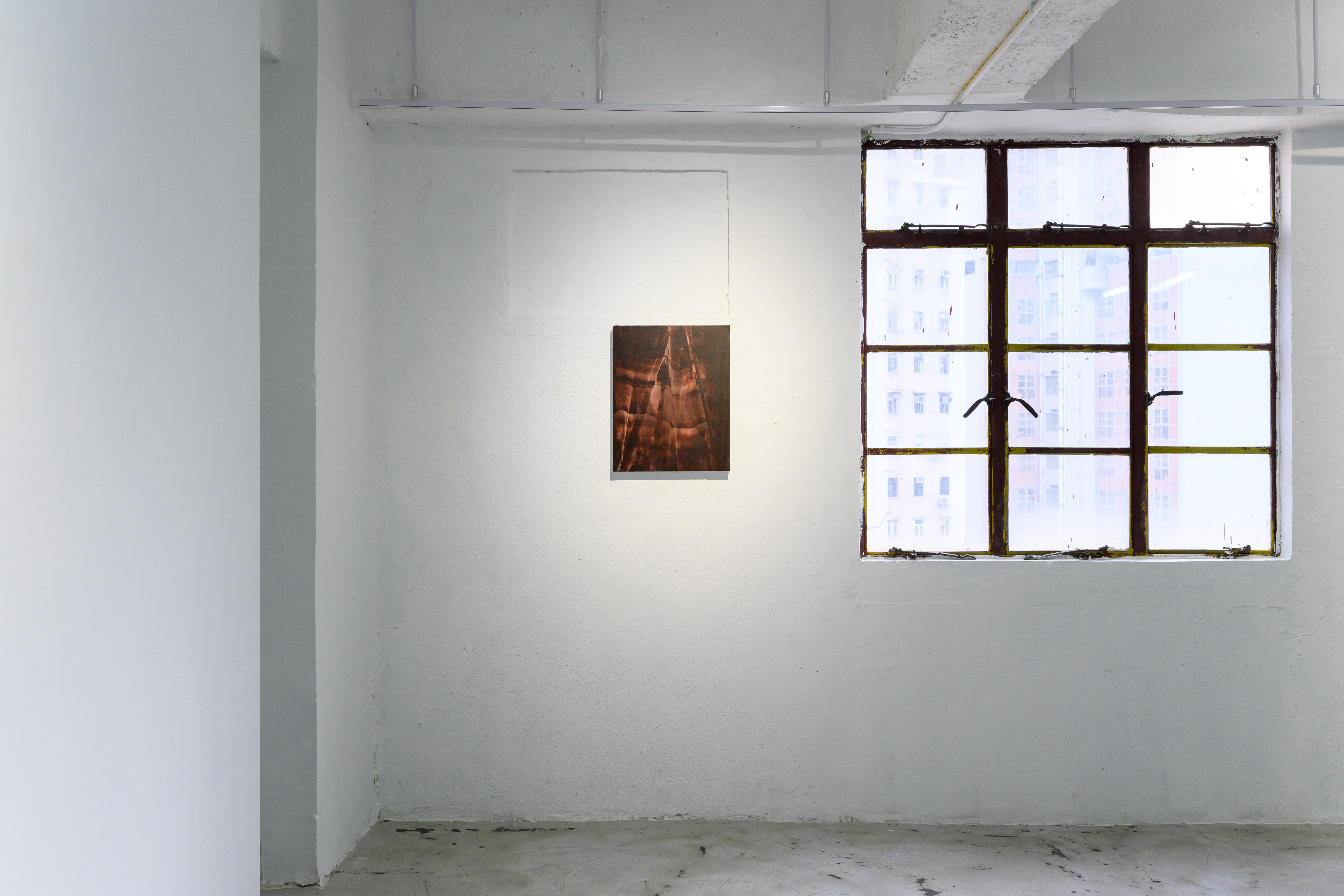
Oil on board
50 x 40 cm
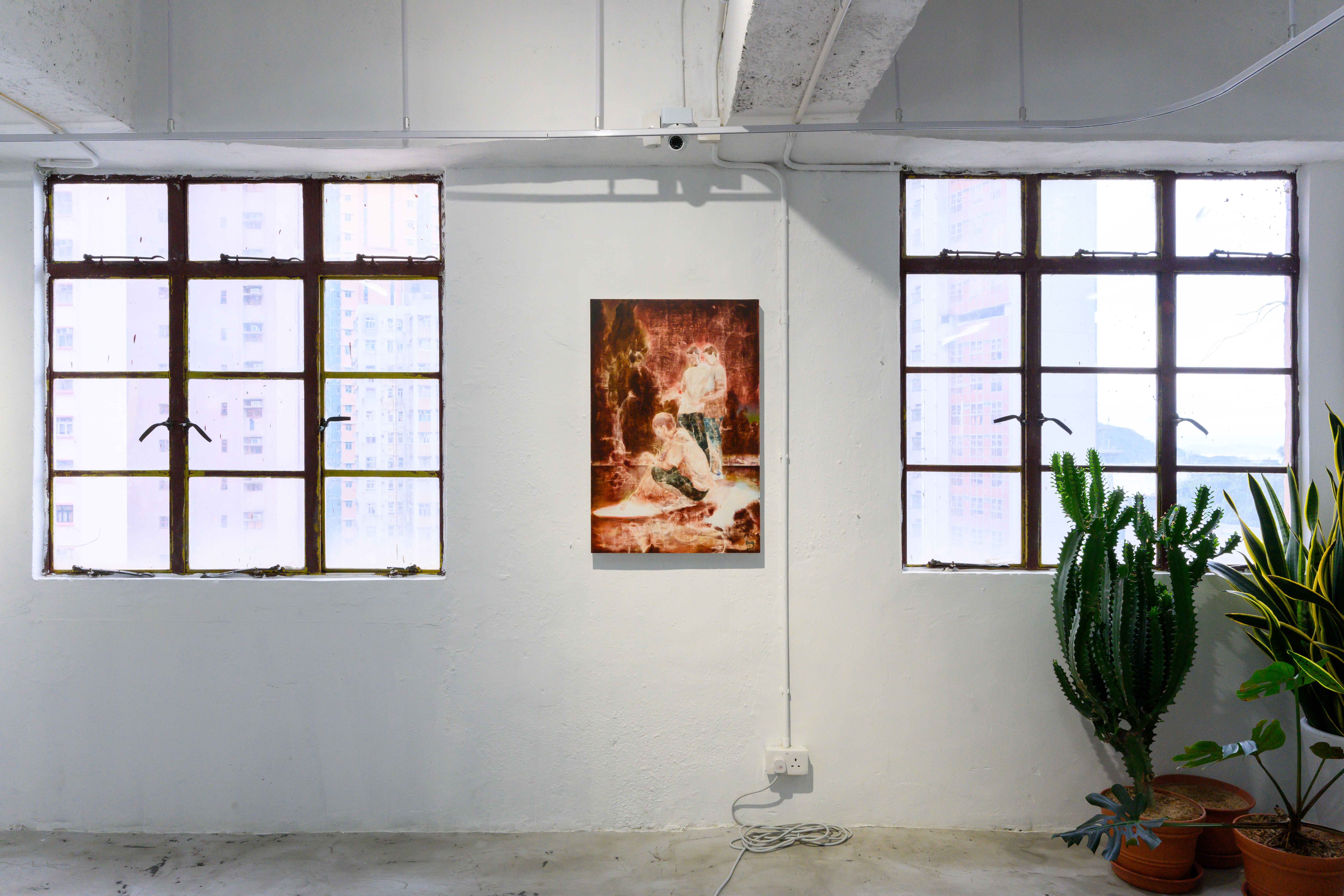
Oil on board
90 x 60 cm
